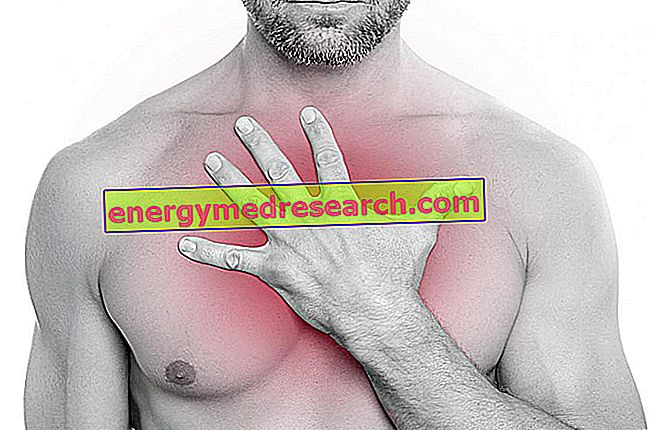By Dr. Roberto Uliano
PMS afflicts millions of women around the world throughout the reproductive period. A sofine is over 85% of the female population, experiencing one or more symptoms in the days before or during menstruation; among these women, around 2-10% show symptoms that are so important that they make it difficult, if not impossible, to carry out normal daily activities.
Premenstrual syndrome can manifest itself in mood disorders, depression, irritability, headaches, breast tenderness, heavy weight gain and water retention. The real cause of this phenomenon, now social, remains unknown, and the theories put forward over time are different.

One of the most common symptoms of PMS is weight gain. This feature is often due to a large increase in water retention, but in some cases it is aggravated by the increased sugar intake that often accompanies this period.
Let's see some concrete cases.
Nutrition and premenstrual syndrome: do you feel swollen?
In the premenstrual phase and during menstruation, one of the most common disorders is the sensation of abdominal bloating, sometimes accompanied by a considerable increase in weight. This happens due to the relaxation and muscular distension of the abdominal wall just before and during the menstrual phase. Sometimes the swelling also affects the legs; in this case the cause is to be found in water retention lurking at the "cycle". This situation is due to the spillage of waste by the capillaries into the tissues, an excess that the lymphatic system cannot drain. In this case, a localized edema is formed below the tissues, particularly at the level of the legs. Here the increase in progesterone secretion comes into play especially during the second phase of the cycle. The vessel walls are particularly sensitive to this hormone and in response to it increase their permeability. Finally, progesterone has an effect on the smooth muscle of the body, such as to cause a decrease in its motility with consequent abdominal distension, due to the sense of swelling felt during this period.
In some cases there is an increase in constipation. In order to prevent such disorders, it is necessary to observe some precautions and to change eating habits before the cycle. First of all, in the ten days preceding the onset of menstruation we recommend a low salt diet, that is low salt content, to avoid the tendency to water retention and swelling. This means avoiding some sodium-rich foods: cured meats, sausages, cheeses, smoked meat and fish, and even all baked goods such as bread, pizza and biscuits. But that's not enough! A diet particularly rich in saturated fats deriving from these foods can slow down the lymphatic system, overloading it with the entry into circulation (see chylomicrons) of fat droplets acquired with food, which can "clog" the lymphatic drainage.
It is therefore important to follow a diet low in lipids avoiding all the sausage products and animal fats, preferring the consumption of fruit, vegetables and legumes. In fact, these foods have a greater quantity of substances called lignans, which remove excess hormones from the circulation, re-establishing hormonal balance. Furthermore, fruits and vegetables, thanks to their greater quantity of minerals, together with a generous supply of water, restore the hydro-saline situation, increasing diuresis and eliminating excess waste. Recent studies, in fact, have confirmed that a greater intake of calcium and magnesium, minerals present in vegetables and legumes, can greatly improve the symptoms associated with premenstrual syndrome. These minerals can be absorbed through the intake of certain foods, such as wheat germ, soy, figs, corn, apples, walnuts, almonds, fish, garlic, peaches and apricots.
In some cases the situation appears to be worsened by other pathologies, such as the modification of thyroid hormones that fail to effectively carry out their activity, aggravating water retention even more. In these cases it is useful to support the thyroid function through the generous contribution of foods rich in selenium, such as wheat bran, of which the thyroid has strong needs to synthesize hormones.
In particularly serious water retention situations it is useful to use draining herbal products, such as green tea (which is also a strong antioxidant), in the form of tisane or concentrated extracts, together with infusions containing birch, a powerful diuretic. In the case of an existing complication of the venous microcirculation it is useful to use extracts based on flavonoids, compounds of which all violet-colored fruits are rich, such as plums, grapes, etc., which decrease capillary permeability.



